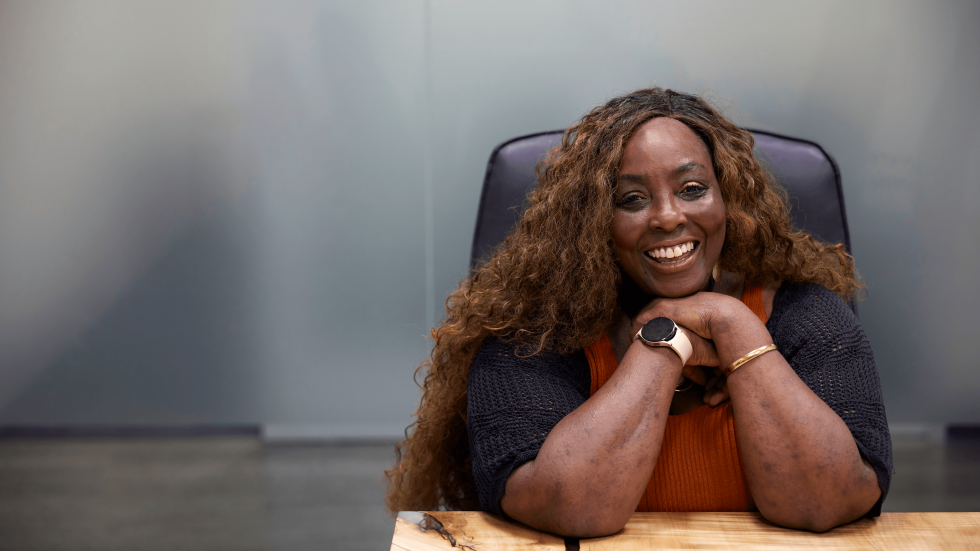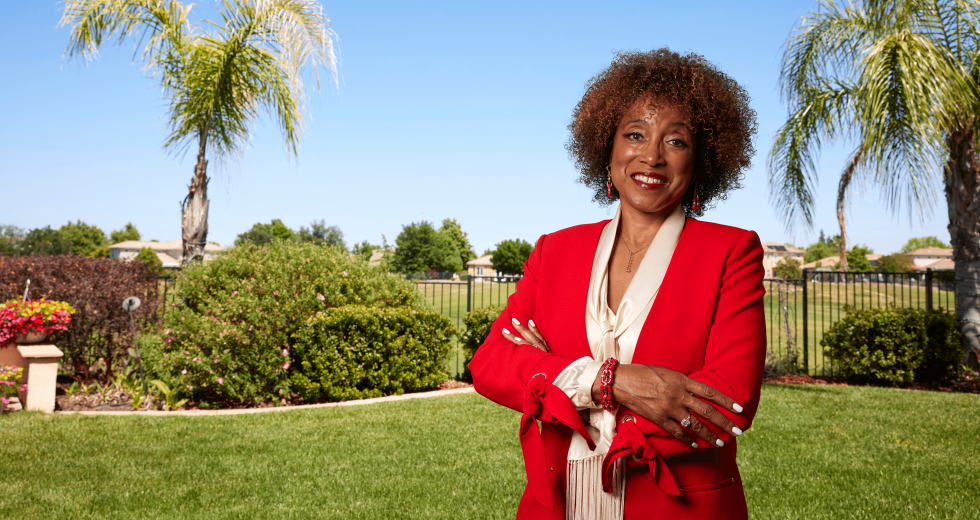“When I hung up my shingle six years ago, I wanted to help women and women of color,” says Gayle Guest-Brown, owner of Guest Brown Impact, an executive leadership and coaching firm based in Roseville. Guest-Brown is among the growing number of consultants in the Capital Region aiding organizations in diversity, equity and inclusion implementation. DEI involves organizations making planned efforts to remedy issues of disparity in the workplace.
When leaders decide to embark on DEI, they may first turn to their human resources department or elsewhere within their organizations. But “most small companies don’t have DEI expertise; the HR person is not an expert,” says Guest-Brown.
Instead, some business leaders partner with consultants who help their organizations to take on the complexities of DEI. We spoke to several DEI consultants in the Capital Region to learn more about their field and why they think it’s an important area of investment.
What is DEI?
Before embarking on a DEI journey, whether with consultants or full-time staff, leaders should first understand what the term means in a business context. According to global management consulting firm McKinsey and Company, DEI involves “three closely linked values held by many organizations that are working to be supportive of different groups of individuals, including people of different races, ethnicities, religions, abilities, genders, and sexual orientations.”
DEI generally has three components that work jointly. “Diversity is looking at the makeup of the organization. Equity is giving people what they need to be successful. Inclusion comes after getting diversity and equity, and that ensures people are contributing to that environment,” says Dr. Colette Harris-Mathews, principal consultant at Harris Mathews Consulting in Sacramento.
Sometimes a fourth component of belonging is in the mix, leading to the acronym DEIB that Guest-Brown explains with her version of a popular analogy. “Diversity is getting an invitation to a dance, inclusion is when you get asked to dance, equity is that everyone has access to the dance, and belonging is being asked to participate in the playlist,” she says.
Debra Roak, co-CEO of CRA Consultancy in Sacramento, defines DEI
as “being able to educate people to open up hearts and minds.”

Likewise, DEI has comprehensive meanings for CRA Consultancy Co-CEO Debra Roak, also based in Sacramento. She defines DEI as “being able to educate people to open up hearts and minds; an opportunity for us to accept every person and see everyone as a gift to us all.”
The Need for DEI
The existence of disparities in the workplace for minorities and women exemplify a need for DEI. One disparity is the wage gap. For instance, in California, Black women earn 54 cents for every dollar that white, non-Hispanic men earn, according to a 2021 study of pay data from the American Community Survey by the Institute of Women’s Policy Research.
Another disparity that minorities and women encounter is the promotion gap. A 2022 “Potential and Gender Promotion Gap” study by MIT professor Danielle Li and other researchers found that, in a group of 30,000 management-track employees of a retail chain, the organization was 14 percent less likely to promote women than men. Researchers saw a correlation with promotions and ratings for potential: Women received 8.3 percent lower ratings for potential, even though they received higher performance ratings than men on average.
In the past few years, DEI took center stage for businesses due to events tied to racial discrimination, including the death of George Floyd in 2020 during a police encounter. “DEI became urgent after the George Floyd incident,” says Roak. “We realized that things hadn’t changed as much as we thought that they had.” Guest-Brown agrees: “The world became 1,500 more times curious about systemic racism. Books flew off the shelf,” she says.
As a result, organizations joined the DEI bandwagon. “After Black Lives Matter and incidents with police, companies put out DEI statements and even hired DEI executives. It was based on compliance, such as more diversity in management or hiring X number of people from this group,” says Harris-Mathews. But not all organizations that showed an interest in DEI were committed to implementation. “Companies might want consultants to come in to do a training or to give a presentation — not ongoing,” she says.
Starting the DEI Journey
Harris-Mathews says that the first step to incorporating DEI into a business on an ongoing basis is to “assess the situation.” Leaders can start by doing internal work, such as by forming a committee or assigning an existing employee to assess if the company is diverse, equitable and inclusive. “You hire a DEI consultant when what you’ve been doing hasn’t worked and you really want to move the needle. A consultant does not have a personal agenda,” she says.
Once an organization has decided to hire a consultant, the next step is finding the right person. Consultants do not necessarily need to work in the same industry as the organizations, Guest-Brown says. “Consultants will customize work for that company, so the same industry experience may not be necessary. DEI principles are universal.” Longevity as a consultant can be a plus, though DEI as a standalone field is relatively new.
Consultants should also be good listeners and observant. “They should look for somebody that will hear them out about their needs, that is strategic enough to look at the gaps and holes,” Roak says. Moreover, the consultants’ background may be relevant to their roles. “I was included in rooms where other people that looked like me were not included. I put my best foot forward so others that look like me could join,” she adds.
Organizations can have potential consultants undergo evaluations and ask them for Requests for Proposals. In addition, leaders can look for consultants with DEI certifications, which are available from Cornell, Harvard and other universities, that show an understanding of key concepts.
Implementation
The process of DEI implementation is complex. Guest-Brown begins by getting to know the organization. “What are their guiding principles? What are their issues?” she says. She works on vocabulary and community agreements while also gathering information through interviews and surveys. This stage of the process can take three months. Then she designs a plan that aligns with the organization’s principles, which can take a few more months. “A small group of people and I come up with a transformational program that identifies the benefits of their chosen path and what they hope to gain.”
Roak’s method likewise involves a positive approach. She conducts a needs analysis and then conducts trainings based on it. “We work on team building and training teams with intention included. Putting egos aside and focusing on strengths,” Roak says. She also works on developing mutual understanding. “Focusing on understanding where somebody is coming from; everybody has a different perspective. Understanding who you are initially and under stress; you can understand how people show up. Pressures cause you to show up differently,” she says.
The consultants’ role is complete after they have put in place systems and people. The leaders “know what they’re doing. They got it, and they move on from there. People are trained; they have a road map,” says Guest-Brown.
On their own, organizations can re-evaluate themselves every year regarding their DEI practices. They can have the view that “we’re going to reassess that we’re making our employees face a sense of belonging and that our practices are equitable,” says Guest-Brown.
“You always need a refresher, you hire new people. You visit DEI on a regular basis,” agrees Roak. Organizations can also hire consultants again in the future if the need arises.
Obstacles and Factors for Success
DEI success involves doing difficult work on an ongoing basis. Several factors are necessary for this success, such as having backing from the CEO and a member of senior leadership spearheading the DEI effort. “I look at leadership and their willingness to implement changes,” says Guest-Brown.
Another factor is having adequate resources. A 2022 survey of human resources and DEI professionals by Culture Amp titled “Understanding the DEI Landscape” found that only 34 percent said that they had sufficient resources for DEI initiatives. Surprisingly, 81 percent of the respondents thought that DEI was beneficial for their organizations, which shows incongruence between views of DEI and its implementation.
A third factor that impacts success is having a DEI mission statement that clarifies what DEI means to the organization and creates alignment, but only 50 percent of the organizations in the Culture Amp survey have DEI statements. For instance, Sacramento Country Day School, an independent and private college preparatory school, has established DEI statements for its work and its website that act as their guidelines. (See sidebar.)
Leaders can face obstacles when implementing DEI, such as their own biases. “We are all good people; we don’t intentionally discriminate. But unconscious biases exist,” says Guest-Brown. “The companies that are serious about being inclusive and equitable have plans in place to mitigate biases.”
Another obstacle that exists is guilt from people in dominant groups. “People that have a network that they benefit from feel guilty. We try to help them by focusing on strengths,” says Roak. Her goal is to be inclusive of everyone rather than having certain people feel alienated.
Resource scarcity is another obstacle. “The thinking is that when resources are scarce, I hire people who look like me. I create scenarios that I am comfortable with — I might overlook someone who is qualified,” Harris-Mathews says.
For companies that surmount the obstacles, the benefits of DEI are numerous. McKinsey’s 2020 “Diversity Wins” reports found a strong correlation between diversity and higher business performance. For instance, organizations in the top quartile of gender diversity in executive teams were 25 percent more likely to have above-average profits compared to those in the bottom quartile.
Higher business performance may come from DEI’s ability to foster outside-the-box thinking. “You get to manage in a different space; have different ideas, innovation and creativity on how organizations work,” says Harris-Mathews.
Roak has observed the positive outcomes of DEI. “People see how special their team members are, how they benefit teams. Being able to strategically look at how everyone works together and what everyone brings to the table. It brings acceptance.”
–
Stay up to date on business in the Capital Region: Subscribe to the Comstock’s newsletter today.
Recommended For You

Case Studies in DEI
How Capital Region organizations are investing in diversity, equity and inclusion
Across the Capital Region, companies and nonprofits are investing in diversity, equity and inclusion and seeing returns. Comstock’s spoke to DEI leaders at some of these organizations to learn about their methods and future initiatives.

Diversity Is Your Workplace’s Biggest Strength
Active listening, personal bias training and slowing down can help workplaces embrace diversity in a more meaningful way
Guest writer Cassandra Walker Pye shares how bringing
together people with varied backgrounds can lead to
more thoughtful and creative ideas.




